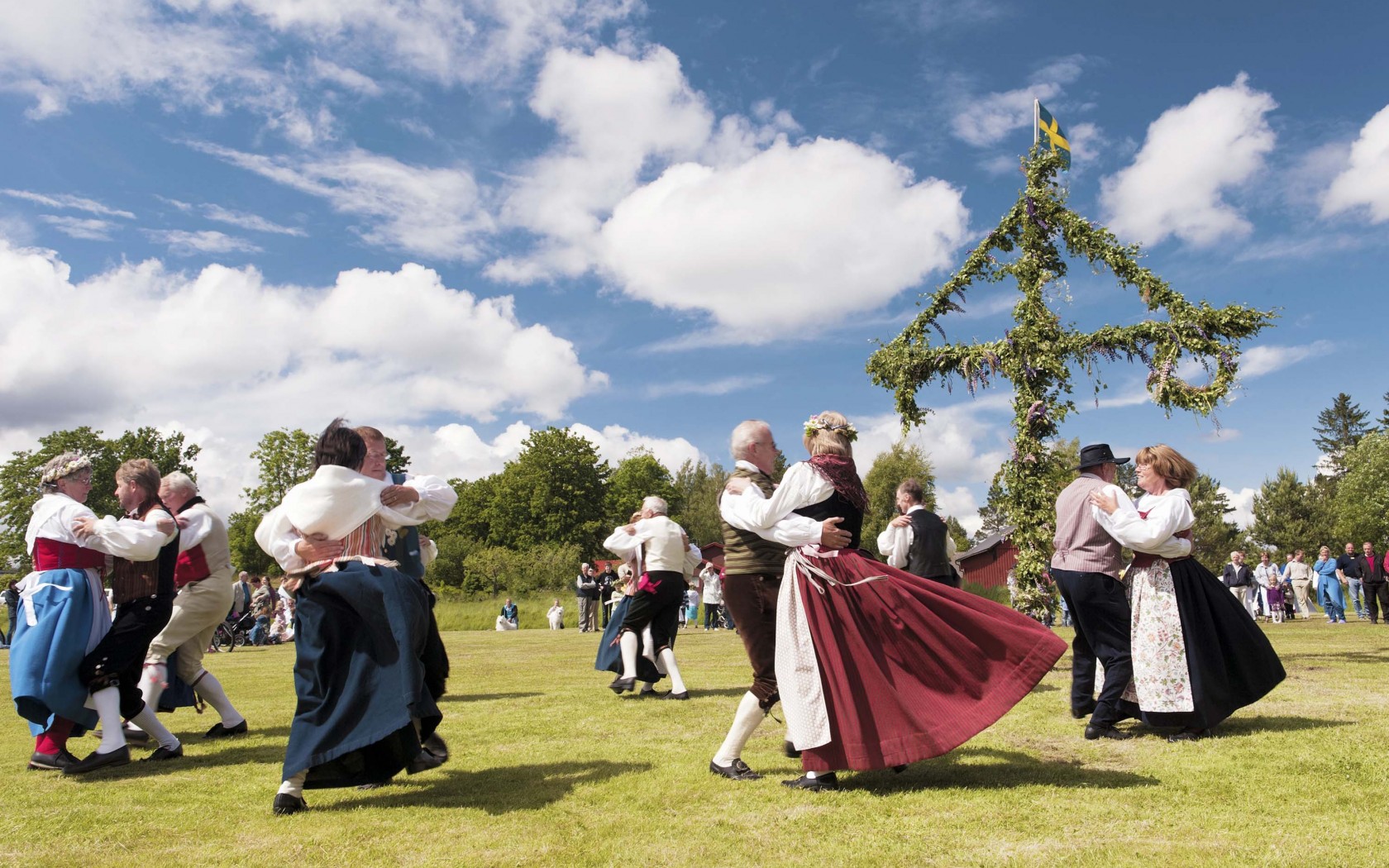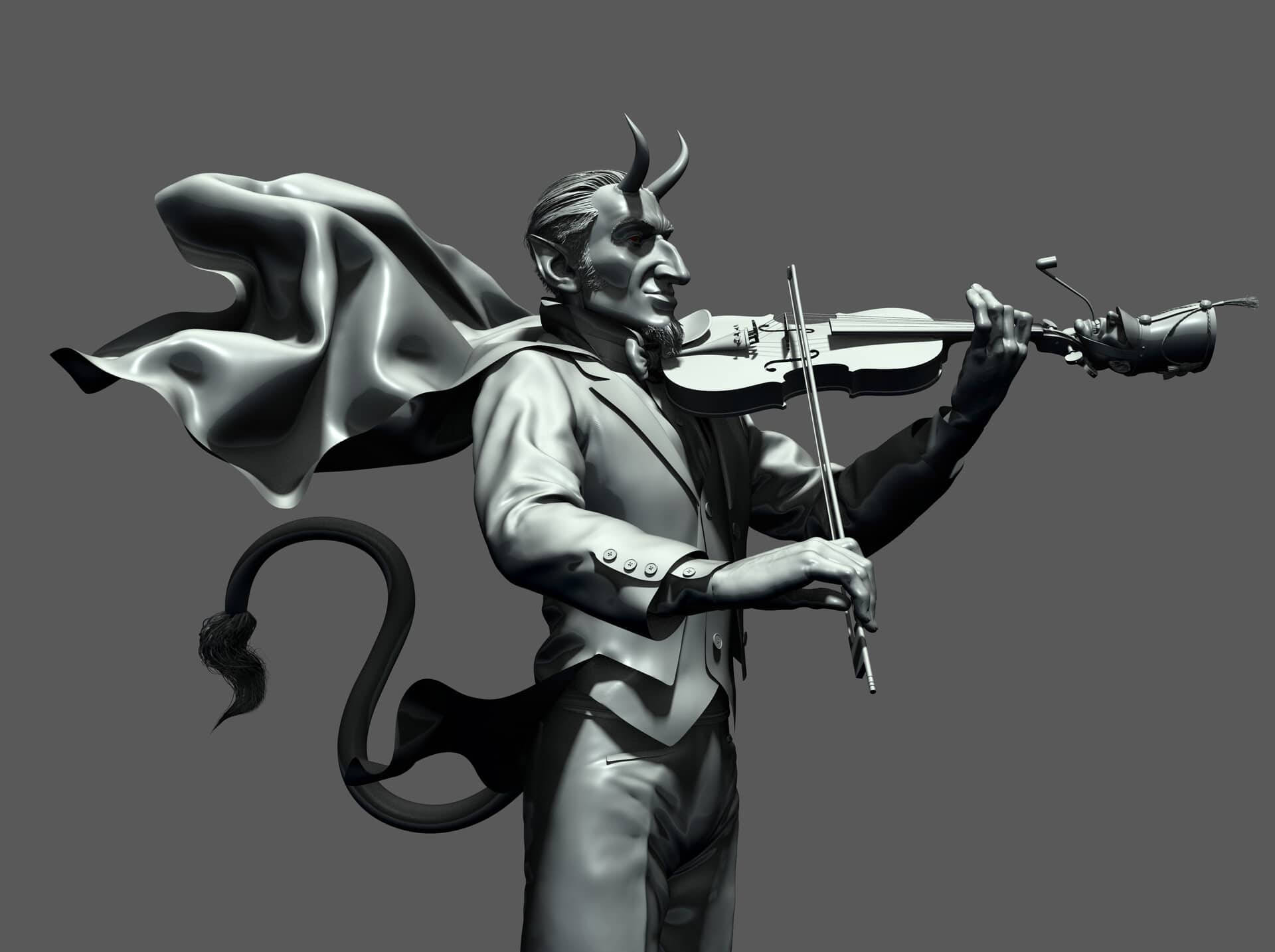
The most popular of the traditional dances of Sweden is polska (not to be confused with polka or polka, originally from Central Europe). This dance, present in almost all the traditional celebrations of the country, also has a curious history behind it, being also known by the name of "The Devil's dance".
Unlike what happens in other European countries, in Sweden the traditional music (folk music) is more alive than ever. There are many folk groups that cultivate these old traditions, handed down from generation to generation. The spelmansstämmor, a word that can be translated as "musicians gathering", are small music festivals, the ideal events to get closer to this musical tradition and discover the magnetism of Swedish dances such as polska.
From June to September, these outdoor festivals are held throughout the country. In general, these are small meetings, although some of them, for example, that of Bingsjo, which takes place at the beginning of July, brings together thousands of people. In all of them the happy chords of the polska always sound.
Origin of the Polska
As its name suggests, the roots of the polska go back to the influence of the monarchy of Poland in the countries of northern Europe at the beginning of the seventeenth century (in Swedish the word polska is also used to refer to the Polish language).
However, many scholars claim that except for the name, dance and music of the Swedish polska it has exclusively Scandinavian roots. Perhaps the birth of the polska arose from a fusion between different musical traditions, which would have evolved to its current form.
The truth is that in other Nordic countries like Norway, Denmark o Finland The polska is also danced, although in different variants. The Swedish polska is a melody that has the same rhythm as the vals. To be danced, it takes at least four people, just as it happens with the minuet. However, the polska is danced more energetically and less solemnly. In fact, its staging and choreography is closer to that of some traditional Balkan dances than the aristocratic dances that emerged in the elegant European salons of the XNUMXth century. The best example of all this we have in the following video:
The Polska in Sweden
The polska has been played and danced in Sweden for several centuries. The tradition has been carried on from father to son, although different regional styles have evolved over time.
From the XNUMXth century on, the old popular tunes began to be written in musical scores. Thanks to the work of many musicians, the polska survived, as was about to disappear during the period of industrialization of the country, which brought with it the rural exodus, the abandonment of many villages and the forgetting of many old traditions.
Actually, the interest in recovering the polska arises after World War II, with numerous private initiatives of cultural and folkloric groups, appealing to the memory and tradition of the oldest people from different regions of the country. Many old polskas were rescued and their music played again decades after they were last played.
Regional varieties
Within Sweden, different styles of polska are distinguished according to each region. These are the most popular varieties:
- La sixteenth note polska, smoother and more uniform, it is danced in the south of Sweden, especially in the region of Scania and the sea coast Baltic.
- La eighth note polska It is danced practically throughout the country, although it is especially famous in the central region of Dalarna.
- La polska triplet is the typical style of the mountainous regions of western Sweden (Varmland, Jamtland y Härjedalen), the closest to the Norwegian border.
The legend the Devil
But Why is the polska known as "the Devil's dance"? This name has its origin in a curious legend.

The legend of the "Devil's dance"
As can be seen in the video above, the fiddle it is the most important instrument when playing a polska. Sometimes the notes of the violins lengthen and reach tones so high that they remind us of animal sounds or even music from another world.
Legend has it that on one occasion, a group of people from a Swedish town called horga gathered around a violinist to listen to his music and dance. At one point, in the middle of the party, a strange character completely dressed in black appeared who asked to be allowed to play the violin. When he had the instrument in his hands he began to play a hypnotic and feverish melody: the polska.
Such was the strength of that music that no one present could stop dancing. And so they continued until they died, completely exhausted. Their skeletons kept dancing and they ended up rolling down the mountain. Those poor wretches had been victims of the "Devil's dance." Indeed, it was he himself, the mysterious man in black, who had been playing the violin to take them with him to Hell.
I am monse and if I like it